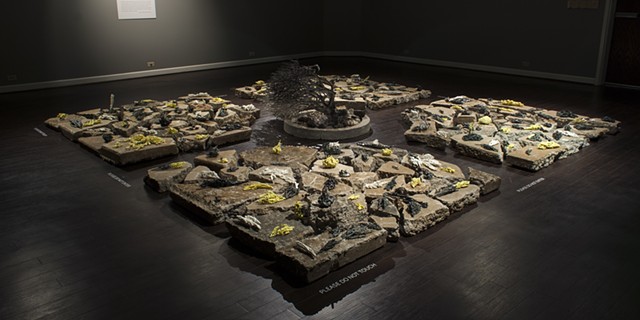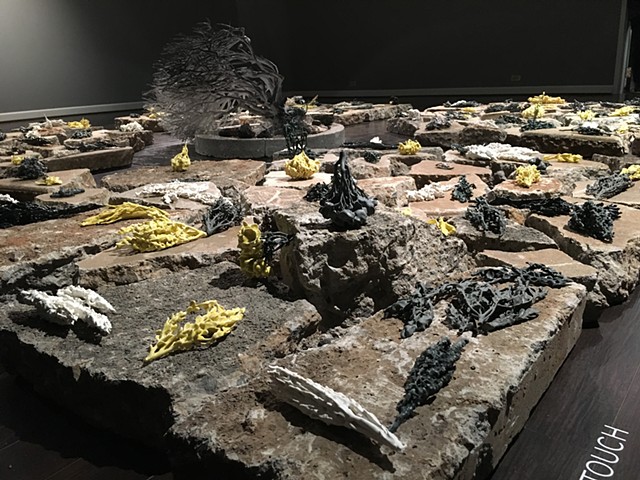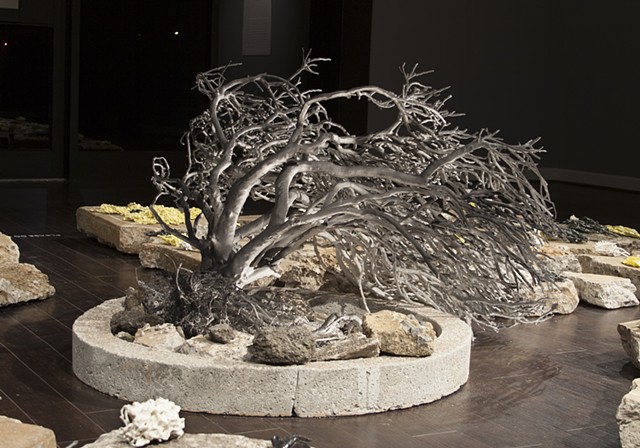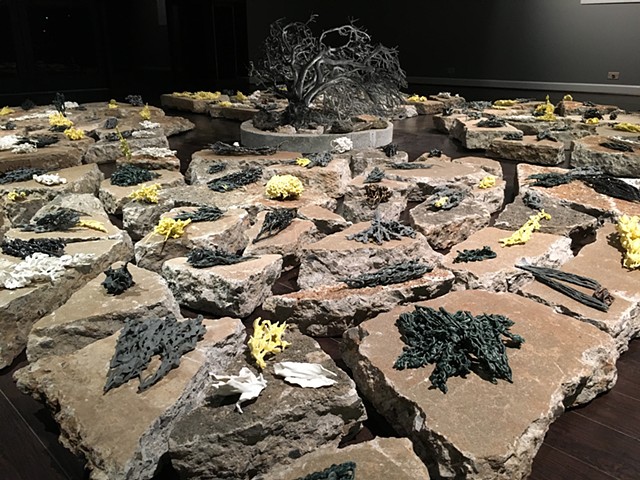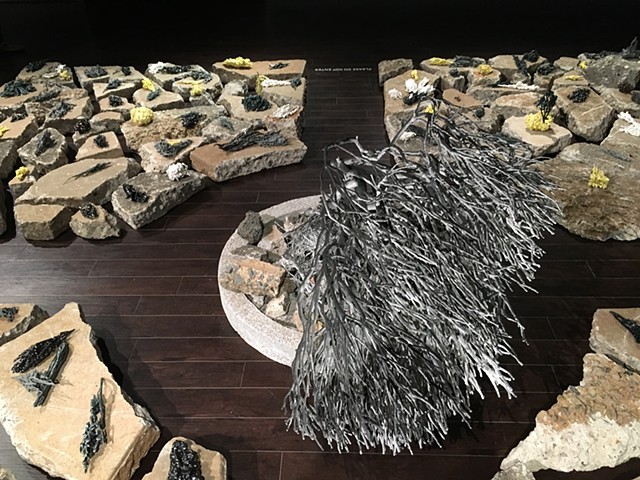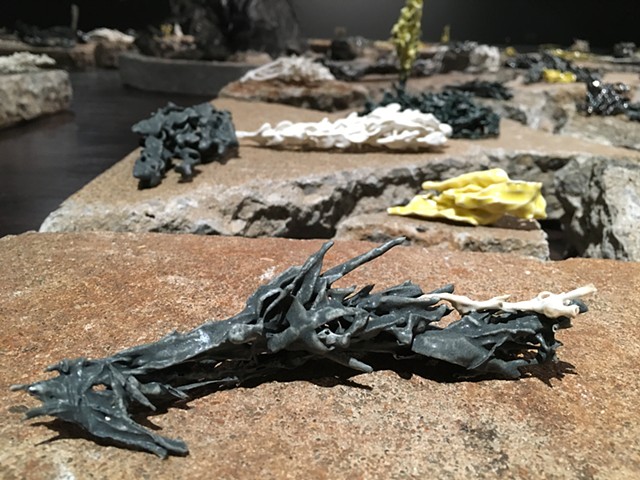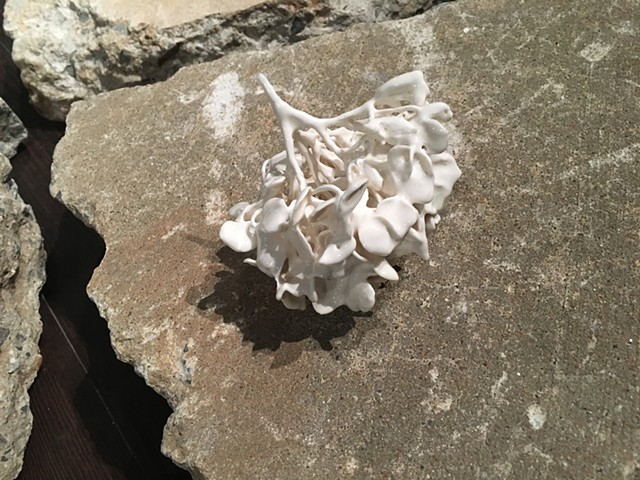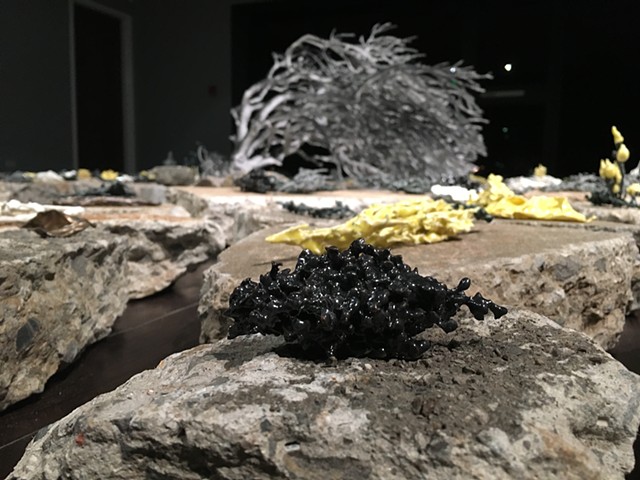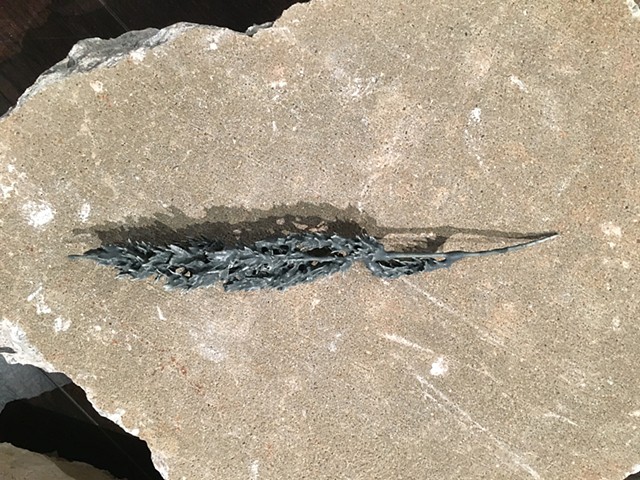A Flower's Shade
The formal garden, as seen in the Palace of Versailles or Chateaux de Vaux-le-Vicomte, is a spectacle of man’s dominion over the natural world. Inspired by the rules of geometry, optics, and perspective and created under the pretext of aesthetic pleasure, French formal gardens embody and enforce order and hierarchy. Here, the chaos of the natural world has been pruned into obedient symmetry—trees are sheared into geometric forms, boxwoods embroider the earth in curving patterns, the earth itself is flattened and terraced. Pools, cascades, and fountains display feats of engineering, as they reflect and amplify man and his creations dotting the landscape. This luxuriously artificial space informs my compositions, even as I reject the patriarchy of its visual language. In A Flower’s Shade, broken slabs of concrete, a calling card of the Anthropocene, are arranged into geometric patterns reminiscent of those found in the formal garden.
The sculptural forms growing from the concrete garden celebrate and preserve the fleeting and the unwanted: weeds collected by the roadside, branches and leaves trimmed from hedges, shrubs and trees removed to improve the view, and flowers picked as they begin to wilt and fade. Each bit of plant matter was dipped in liquid clay slip and fired. During the firing, the plant matter burns out, leaving behind delicate porcelain fossils, which are then assembled into new forms. The successive layers of slip and glaze serve to abstract and de-familiarize the once recognizable vegetation. Collectively, the sculptures form a dark garden as they colonize and reclaim the fractured concrete terrain. Yet, each delicate form is carefully ordered and composed, a specimen on display.
